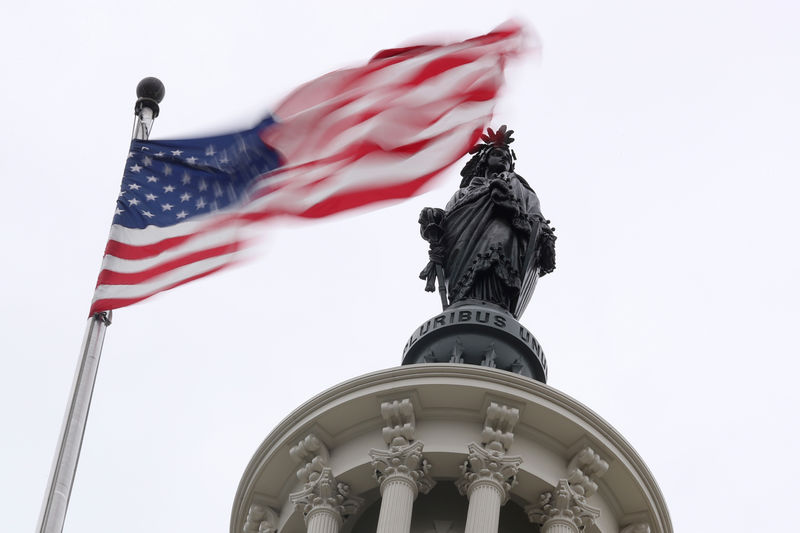 © Reuters. The U.S. flag flies near the Statue of Freedom atop the U.S. Capitol in Washington
© Reuters. The U.S. flag flies near the Statue of Freedom atop the U.S. Capitol in WashingtonBy Laila Kearney
NEW YORK (Reuters) – U.S. state spending topped $2 trillion for the first time in fiscal 2018, with Medicaid expenditures rising the most along with a significant increase in transportation spending, according to a report released on Thursday.
Total expenditures grew an estimated 4.8 percent compared to 3.8 percent in fiscal 2017, the National Association of State Budget Officers’ (NASBO) annual state expenditure report said.
“The fiscal 2018 data presents a slightly improved fiscal situation than the prior two years,” John Hicks, NASBO executive director, said in a phone interview.
“We’re seeing a slight increase in the growth of spending both from total spending and states’ own funds,” he added.
The annual report focuses on the seven top state spending categories, which are elementary and secondary education, higher education, public assistance, Medicaid, corrections, transportation and “all other.”
Each category saw some growth in fiscal 2018, with public assistance rising the least at 0.7 percent and Medicaid, the state and federal healthcare program for the poor, growing the most at 7.3 percent.
Growth in state spending of federal funds outpaced spending of state-generated revenue, including from general funds, the report found.
Medicaid continued to account for the bulk of federal dollars flowing to states. The program made up 29.7 percent of total state expenditures in fiscal 2018, compared to 20.5 percent a decade earlier.
Elementary and secondary education expenditures, which rose 4.6 percent, remained the largest area of state general fund spending.
The report also highlighted a 6.5 percent increase in transportation spending, which represents 8 percent of total state expenditures. The rise indicates a growing focus on infrastructure.
General fund revenue also grew in fiscal 2018 by 6.2 percent, the highest growth rate since fiscal 2011. It was unclear how much of that revenue, largely made up of income and sales taxes, was nonrecurring, the report said.
Looking forward, states expect to see some growth in state revenue collections. But they also are girding for long-term spending pressures from rising health care costs, pensions and school infrastructure, among other expenses, the report said.
Fiscal 2018 ended for most states on June 30.
Fusion Media or anyone involved with Fusion Media will not accept any liability for loss or damage as a result of reliance on the information including data, quotes, charts and buy/sell signals contained within this website. Please be fully informed regarding the risks and costs associated with trading the financial markets, it is one of the riskiest investment forms possible.
Source: Investing.com




























